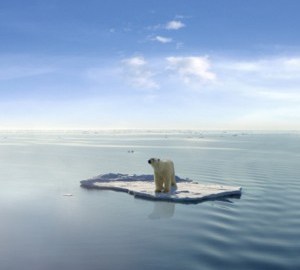Andrew Revkin on the Super Wicked Problem of Climate Change

–Guest post by Amanda Frank, graduate student at American University.
Contemporary debates over climate change reveal the inherent complexity of the issue, which the New York Times’ Andrew Revkin refers to as a “beyond super wicked” problem. In a presentation last year to the Google Science Communication Fellows Program, Revkin elaborated on the challenges of communicating the nature and risks of climate change as well as the difficulty of generating public urgency.
Revkin compares the current climate debate with the ‘good old days’ of environmentalism, when the pollution problems of the 1960s and 70s were visible and had obvious public health consequences. This was an era of bipartisanship, with the creation of the EPA and the signing of the Clean Water/Clean Air Acts occurring under Republican president Richard Nixon.
Today’s issues surrounding climate change, however, have far more subtle consequences. Using the metaphor of shifting-baselines, Revkin describes how gradual changes are difficult to notice, leading to the creation of new “norms.” In the case of climate change, increasingly milder winters and earlier springs are less noticeable and do not cause the same concern as the smog and haze problems of the 1960s. Moreover, it is difficult to identify what weather changes can be accurately attributed to climate change. Framing every natural disaster as a result of climate change can be counterproductive if these claims are later refuted.
“Details matter, unfortunately,” Revkin insists. Drawing inaccurate conclusions can backfire and further divide the climate debate. Revkin alludes to a letter by concerned scientists published in Science, which was accompanied by a photograph of a polar bear stranded on a diminishing sheet of ice [image above right]. It took very little time for a climate-doubter to discover the image was fabricated using three separate photographs. Focus shifted to this controversial photo, drowning out the original message of the scientists. Instances such as these become “ammunition for the naysayers” and do little to move the climate debate to the forefront of public concern, Revkin warns. [You can watch his presentation below.]
One lesson to be learned here is that environmental issues can no longer speak for themselves. Unlike the images of urban haze from the 1960s, stories of anxious polar bears or dried up waterbeds fail to generate public mobilization on climate change issues. In fact, a study by Sol Hart and Erik Nisbet suggests that increasing public knowledge about climate change does not lead to greater support of climate policies. Merely transmitting information about environmental repercussions—no matter the degree of impact on the human or natural environment—is not enough to persuade the population of the public who is already disengaged or dismissive about climate change.
Instead, Hart and Nisbet’s study points to the important role of social cues in interpreting climate news. Participants in the study were more receptive to and persuaded by a story about climate change effects when the community involved was socially similar to their own (in this case, farmers in up-state New York verses farmers in France). The public, on both sides of the political fence, are more likely to rally behind an environmental cause when they can personally relate to the people or places in question, suggesting that localizing climate change in terms of impacts and policy action is an important path forward.
There is significant opportunity for the climate change movement to adopt new media strategies in order to reach larger populations of the public. Integrating social cues and increasing the relevancy of climate stories is one encouraging method. Others include introducing climate change issues under existing frameworks, such as public health or the moral responsibility to protect innocents, as was the case in campaigns against smoking and Big Tobacco. These strategies can help untangle the super-wicked problems of climate change so that the movement can generate alliances with people across political ideology and social identity.
–Guest post by Amanda Frank, MA student in Global Environmental Politics at American University, and student in this semester’s course on Science, the Environment, and the Media. Find out more about the MA programs in Public Communication and Political Communication as well as the Doctoral program in Communication.





